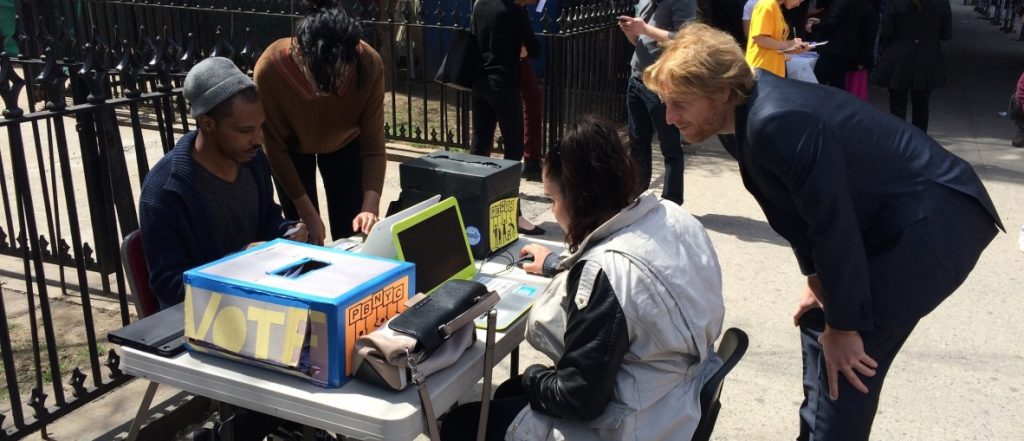WHY GERMANY?
A couple of years ago I was idly scanning through Google Zeitgeist, the search giant’s annual data release of each year’s top search trends. Somehow I found my way onto the international results, and picking almost at random I chose to look at the search terms for Germany.
There, sitting at the top of the pile, was something I could barely believe. The term in poll position was ‘Wahl-o-mat.’ Despite not being a German speaker, I recognized it: it was the brand name of a German website that helps people work out who to vote for.
Not a recently deceased TV star, or a major movie, or a massively viral YouTube video, but an old-fashioned, 36 question online quiz that ultimately spat out a suggested political party. Further searching revealed that it had been used, through to completion, over 13 million times in the 2013 national elections. Even more astonishing is the quiz is run by an arms-length public body—effectively a ‘who to vote for’ service delivered by part of the state.
Since then, I’ve been acutely aware that Germany has a social-impact technology scene that is somewhat unlike that of many other rich countries. So in January this year I set out on a trip to Berlin to find out about tech initiatives that might be a bit different from what you find elsewhere.
CONTEXT: THE SECURITY AND PRIVACY SCENE
It is no great secret that Germany has been closely associated with the groundswell of discontent since the Snowden revelations. But I wasn’t prepared for just how big and central it is to how all technology was viewed, or how widely the suspicion of digital technologies has spread.
The best yardstick of how big the security and privacy tech community is in Germany is to consider the attendance of the year’s biggest community shindig, the Chaos Computer Conference (CCC), held in Hamburg. There were an astonishing 12,000 people present this year, and demand for tickets still substantially outstripped supply. Nearly as many people go to CCC as go to Defcon in America, but in a country that’s about four times smaller. And the number rises rapidly every year.
The concerns are much more widespread than the NSA reading German email, too. After a few days I realized that several people I talked to were using the word ‘algorithm’ (referring to automated technologies like Facebook’s wall) with a kind of distasteful wince. It was similar to the way that a lawyer might reluctantly use swear words when quoting a defendant in front of a judge. This is because the very idea of algorithmic sorting of content in social media has become a kind of dirty word in the tech community—yet another way that big institutions could exploit the rest of us. Poor Al-Khwārizmī, who gave his name to the mathematical concept, must be rolling in his grave.
Several people I talked to remarked that Berlin has become a kind of sanctuary to people who work for both well-known and obscure privacy enhancing technology projects. Living there meant not only more like-minded people to hang out with, it meant less hassle at airports, less likelihood of being followed around or interviewed, less of a feeling of being a bad or wanted person generally. You can buy more stuff with cash. Everyone speaks English, and many people the language of cryptography too. People were not naive about the fact that Germany has it’s own well-staffed security apparatus, but clearly it to this community it feels like a much more acceptable home than most other alternatives.
There wasn’t any consensus about what led to Berlin becoming the hub of this community. More than one person strongly contested the almost-standard idea that the history of the Stasi and of the the Nazis has made the average German more worried about surveillance than the average Brit. I was told that Google and Facebook usage was sky-high in Germany, and that these behaviors at an aggregate just didn’t fit the theory of national suspiciousness. Ultimately, I had no objective way of assessing why there is such a large security and privacy community in Berlin, but if it isn’t due to the sad, violent history of this place then there’s clearly some other very interesting explanation lurking. Theories on an encrypted post-card, please.
My final observation on the privacy and security scene is that the energy surrounding privacy tech and privacy laws has created opportunity costs for the wider civic and social impact tech scene. There were actually, overall, fewer big mainstream civic tech or social impact tech projects than I would have expected to find in a country with wealth, tech chops and political consciousness that Germany has. I suspect it’s because more than a few ideas die in the cradle, smothered by concerns about how user data might be abused. At least one person told me they’d seen this happen.
IMPRESSIVE CIVIC & SOCIAL IMPACT ORGANIZATIONS I DISCOVERED ON MY ADVENTURE
I talked to a lot of people during my stay. The following list, which is in no particular order, simply attempts to give a taste of the interesting projects and people I met, rather than a verbatim record. If I spoke to you and you’re not here, please don’t feel slighted!






